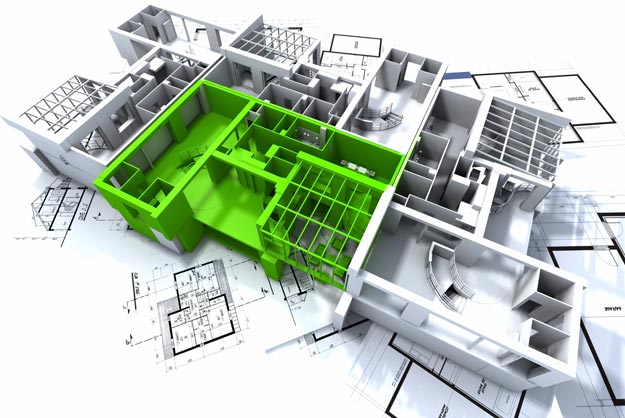Green Construction for a Sustainable Future
Building green or sustainable structures entails using processes that are environmentally responsible and resource-efficient throughout the construction life-cycle: from design & construction to operation & maintenance. This requires close cooperation of everyone involved from architects to engineers at all project stages. At Oorjita, this practice offers an opportunity to use resources more efficiently, while creating healthier and more energy-efficient environments. Leaving a lighter footprint on the environment is a challenge while also being energy-efficient, cost-effective to provide our customers low-maintenance buildings.
 The buildings we live in create a carbon debt before owners even enter the threshold. Not only that, they will continue harming once inhabited, due to inadequate insulation and ventilation and utter lack of sustainable energy options. The average construction site uses materials including natural resources like wood and stone that are not harvested in a sustainable manner. Both logging and mining operations are notorious for damaging the environment through their efforts and doing very little to clean up afterwards. Further, these materials are frequently shipped all over the globe, creating massive amounts of pollution along every step of the way, not to mention the manufacturing processes, which produce even more pollution and waste. And then, of course, there is the construction itself, which continues this assault on the environment.
The buildings we live in create a carbon debt before owners even enter the threshold. Not only that, they will continue harming once inhabited, due to inadequate insulation and ventilation and utter lack of sustainable energy options. The average construction site uses materials including natural resources like wood and stone that are not harvested in a sustainable manner. Both logging and mining operations are notorious for damaging the environment through their efforts and doing very little to clean up afterwards. Further, these materials are frequently shipped all over the globe, creating massive amounts of pollution along every step of the way, not to mention the manufacturing processes, which produce even more pollution and waste. And then, of course, there is the construction itself, which continues this assault on the environment.
Over the last several years, we have grown aware of serious environmental issues (pollution, deforestation, global warming, habitat loss, species extinction, etc.) and have been researching alternatives to the products and services we use on a daily basis. And we have since created a shift in practices, not as a whole, but at least in parts using eco-friendly options in the building process wherever possible. For the average home-buyer, purchasing a 100% green, sustainable structure is not an imperative, but everyone wants to cut their carbon footprint, which can also save them money in the long run. Some buyers look specifically for eco-friendly options that feature entirely wood-free framing, recycled materials (including wood, stone, metal, etc.) or even extras like rooftop gardens to curb the urban heat-island effect. But most people are only just learning about eco-friendly options, but here at Oorjita, we have already kickstarted the process.
There are a number of motives for building green, including environmental, economic, and social benefits. However, modern sustainability initiatives call for an integrated and synergistic design to integrate in the building life-cycle. We use many practices, techniques, and skills to reduce and ultimately eliminate the impacts of buildings on the environment and human health. These practices, or technologies are constantly evolving but the fundamental guiding principles are: Structure Design Efficiency, Energy Efficiency, Water Efficiency, Materials Efficiency, Operations and Maintenance Optimization, and Waste and Toxics Reduction. The essence of green building at Oorjita is optimization of one or more of these principles.
We believe green architecture or sustainable design involves designing a building that is in harmony with the natural features and resources surrounding the site. A perfect example would be our latest project – Villa Istana

